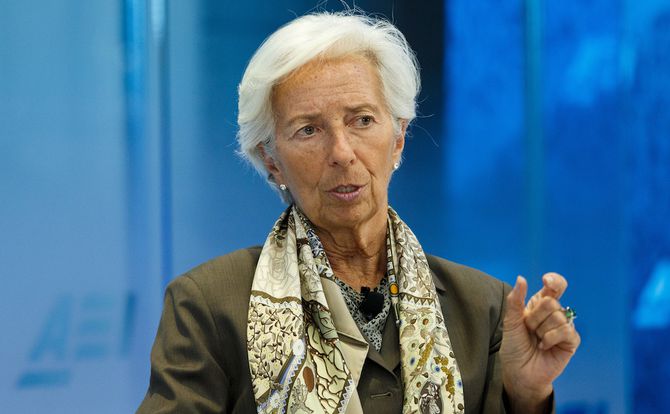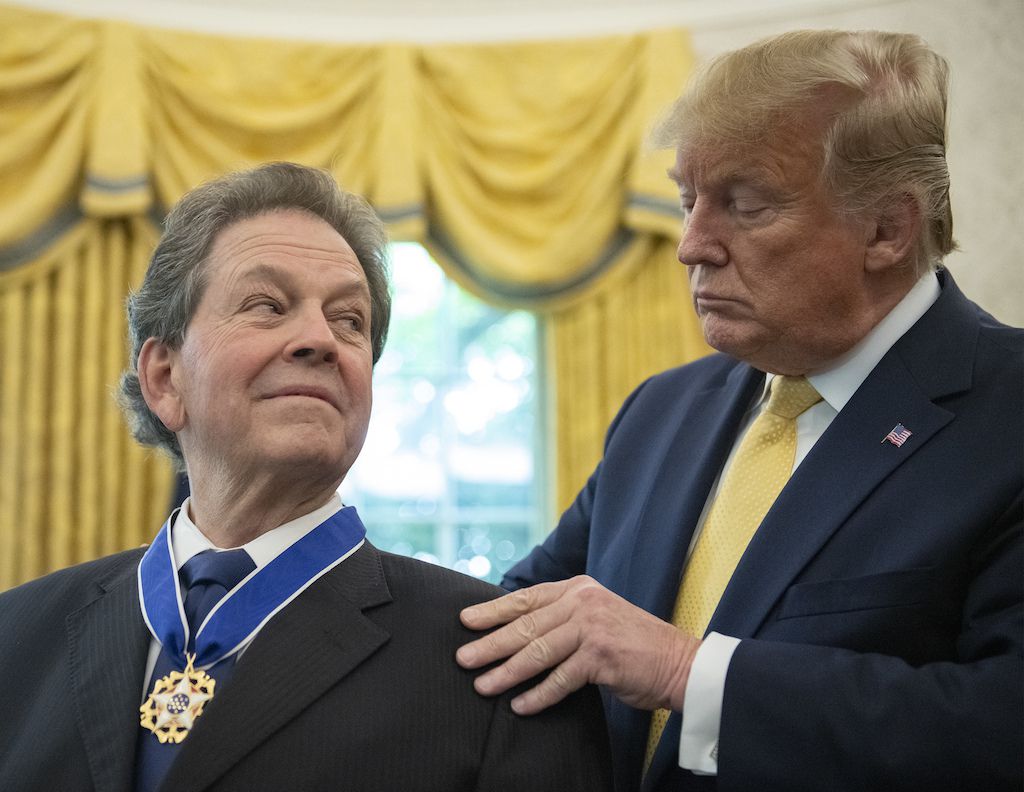The political corruption of monetary policy
The 2008 U.S. housing crash and the European debt crisis led many politicians to question the importance of independent central banks. This approach is not without consequences. There are now several patterns of influence on central banks.

Central Bank during her term as president. © dpa
In a nutshell
- Economic advisors close to President Trump are turning against central bank independence
- The very notion of central bank independence is being challenged in the aftermath of the 2008 economic crisis
- In Europe, monetary policy is at risk of further politicization due to excessive intervention and institutional leadership
With political leaders such as United States President Donald Trump evidently trying to influence monetary policy, many believe the independence of central banks is at risk. Commentators have called for its protection. However, the very notion of central bank independence has become ambiguous. For more than a decade now, unconventional monetary policies in the U.S. and Europe have been undermining this independence. As a result, monetary policy is, to a degree, being corrupted by political interference.
President Trump recently made an unexpected move, from a monetary standpoint, by nominating Judy Shelton to the Federal Reserve Board of Governors. She is a “gold bug” economist (who wants to reinstate the gold standard), a longtime advocate of sound money and tighter monetary policy. Ms. Shelton also opposed the easy money policy of the Federal Reserve (Fed) for most of her career. However, her position appears to have changed and she currently agrees with the American president that interest rates need to be cut. Today’s economic situation, brought on in part by lower taxes and deregulation, could be behind this surprising shift in viewpoint – apparently, a political about-face that could undermine the Fed’s independence, according to some.
Curves and U-turns
During an interview on a New York radio station in June this year, economist Arthur Laffer said the Fed “shouldn’t be independent of the administration. Never should be.” He added, “None of those people were elected. They were appointed. … It’s a policy tool that should be in the hands of the Congress and the President to make our country better.”
Mr. Laffer has been critical of the incumbent Fed boss, Jerome Powell, who presided over a rise in interest rates to 2.5 percent last year. The Fed left rates unchanged until late July, when they cut by a quarter percentage point. Mr. Laffer has called for lower rates to stimulate the economy, echoing President Trump’s assessment of the current Fed policy.
The past decade has seen monetary policy turned on its head.
The economist, father of the eponymous “Laffer curve” (a relationship illustrating that higher tax rates can lower government revenue), was an advisor to President Reagan and a campaign advisor to Donald Trump, from whom he received the Presidential Medal of Freedom in June 2019. That the man who pitted supply-side economics against Keynesianism in the 1970s could adopt such cheap money, Keynesian position also came as a surprise to some. Likewise, Mr. Laffer’s comments against central bank independence were a departure from his earlier stance, considering it was this very doctrine that rescued a large part of the world from the politicization of monetary policy and double-digit inflation rates of the 1970s.
Independence myth
These episodes encapsulate the curse of monetary policy today. The past decade has seen monetary policy turned on its head, and the notion of central bank independence is shakier in our new, postcrisis world. Central banks are typically responsible for ensuring price stability (i.e., avoiding excessively low or high inflation). Some also have a mandate to promote employment and growth through monetary policy. In the U.S., the “dual mandate” of the Fed includes both inflation and employment targets. However, after the 2008 U.S.-bred crisis and the 2010-12 crisis in the eurozone, the notion that central banks should also guarantee financial stability rapidly gained traction. Finally, in a globalized world, currency manipulation by countries like China has led to counter-protectionist reactions in the U.S. and Europe, and some of these measures have been implemented through monetary policy.

Central banks are independent, but only within a constraining framework. Authors Sarah Binder and Mark Spindel, who have analyzed Fed policy since its beginnings in 1913, even talk about the “myth of independence” when it comes to the U.S.: the Fed and Congress are interdependent. After the New Deal and World War II, the gradual centralization of the institution first caused a loss of independence vis-a-vis the Treasury. Some autonomy was regained afterward, and measures to increase transparency and accountability were implemented. The Binder-Spindel team argues that this centralization process has allowed politicians to blame the Fed whenever the economy is sluggish or in recession, hence the palpable tension between independence and accountability.
Shortsighted meddling
To be sure, central bank independence can be affected in different ways. One such way, well exemplified during the 1960s and 1970s, is direct and shortsighted political meddling in monetary policy. To please their constituencies and win reelection, politicians manipulated rates to create economic stimulus at the cost of growing inflation and, eventually, stagflation (high inflation and high unemployment). Although Dr. Laffer is unlikely to want such an outcome, President Trump’s consistently critical tweets against Fed Chairman Powell seem to belong to that category of influence. (Of course, it could be argued that we are not currently going through a period of inflation. However, can we be sure that Consumer Price Index inflation measures are accurate? What about “shrinkflation,” when items shrink in quality and quantity but not in price? And what about asset bubbles? Was not the colossal 2008 housing bust in the U.S. – brought on by cheap money policy – enough of a warning?)
Some also argue that the central bank has to be democratically accountable since it engages in policymaking. This approach does not encroach on independence as much as the one described above and seems sensible as long as it is carried out with “noses in, fingers out,” to quote the economist Steve Hanke. A situation where central bankers have a clear mandate and are free to use the policy instruments of their choice in an accountable manner should not pose any politicization issue. In this case, there could be a detailed a posteriori auditing of the sales and purchases of the central bank, as in the early proposals for reforming the Fed’s audit included in the Senate version of the Federal Reserve Transparency Act of 2015. In our quantitative easing world, where central banks repurchase private and sovereign bonds, it seems only natural that lawmakers should monitor central banks – provided they are also accountable.
Intervention spirals
Quantitative easing and doing “whatever it takes” to defend financial stability – as the outgoing president of the European Central Bank (ECB) Mario Draghi famously said in 2012 about preserving the euro – implicitly means weakening central bank independence. Mr. Draghi believes otherwise and argues that the institution is not threatened because the core objectives are unchanged, even if the current crisis calls for different monetary policy tools. Still, one wonders to what extent monetary institutions remain independent postcrisis, and whether their actions have not been de facto politicized.
Indeed, monetary policy today seems to be afflicted by “spirals of intervention,” with one intervention leading to problems that then require a new intervention to be corrected, and so on. Top-down regulations on banks to “make the system safer” have become stricter and stricter, limiting banks’ lending ability. Low interest rates meant to stimulate the economy have compressed their margins, thus disincentivizing productive lending. Hence the need for quantitative easing to avoid the credit crunch, which, in turn, disturbs global money markets by making safe assets scarcer. Intervention breeds intervention. This is the first symptom of endogenous politicization: past interventions determine future ones, setting them on a rigid path that will reduce the number of policy possibilities and further corrupt fundamental principles (such as “savings efforts deserve remuneration”).
Past interventions determine future ones, setting them on a rigid path.
Unconventional asset purchases by central banks to spur lending can also pose problems. Without a rigorous accountability framework, such purchases generate lobbying, rent-seeking and possibly cronyism, not to mention the efficiency and allocation issues. The American economist Lawrence White refers to this as “preferential credit allocation.” When it comes to the ECB, accountability is, a recent GIS report notes, an “empty, procedural exercise.” Again, the specter of corruption rises.
In another GIS report, Professor Elisabeth Krecké remarks:
TLTRO [Targeted Longer-Term Refinancing Operations] financing is nonetheless often criticized as opaque. The critique starts with the selection of eligible banks and their countries of provenance. So far, about 33 percent of the money has gone to Italy and 27 percent to Spain (perhaps coincidentally, the home countries of the current ECB president and vice president).
Institutional laggards
The third aspect of this politicization relates to the goal of financial stability in the context of irresponsible political leadership. For instance, despite numerous calls by Mr. Draghi for European leaders to put their fiscal house in order while he was trying to save the day with lower borrowing rates, reforms were timid and fell short of what was needed. In truth, unconventional monetary policy is a form of fiscal policy. While it respects the mandate of financial and price stability, it also paves the way for more political irresponsibility. It gradually becomes less and less removed from situations of overspending and over-borrowing. There comes a point when politicians no longer need to directly pressure the central bank, because its leadership will not let the system collapse. This is yet another subtle way to corrupt monetary policy.
Unconventional monetary policy paves the way for political irresponsibility.
In this light, some find it hard to believe that the transfer of ECB leadership to Christine Lagarde, the incumbent managing director and chair of the International Monetary Fund (IMF), will not affect the institution’s independence. As French minister of the economy, Ms. Lagarde oversaw a spike in public spending – from 52 percent to 57 percent of the gross domestic product (GDP) between 2007 and 2011 – while French public debt soared by one third. In May 2010, she handled the Greek crisis by closely managing French bankers, in the traditional French dirigiste fashion. As head of the IMF, she is known to have urged Germany to spend more and be less hawkish on deficits and stimulus spending. It is meaningful that financial markets, currently so addicted to monetary stimulus, rallied behind her nomination. Critics might be right in predicting this will be a politicized ECB term.
Incidentally, a few days after the ECB announced Ms. Lagarde’s nomination, the French government withdrew from its commitment to trim the country’s bloated ranks of civil servants to 120,000 during President Emmanuel Macron’s term. Out of the planned 50,000 job suppressions in the central government alone, only 15,000 are to be carried out. All other French reforms to reduce spending or taxes have amounted to a three-card monte. Ms. Lagarde could play a role in getting President Macron reelected; the politicization of the ECB could intensify. She could even use her persuasion skills to impose Eurobonds on Germany. The subtle corruption of monetary policy would thus continue.







